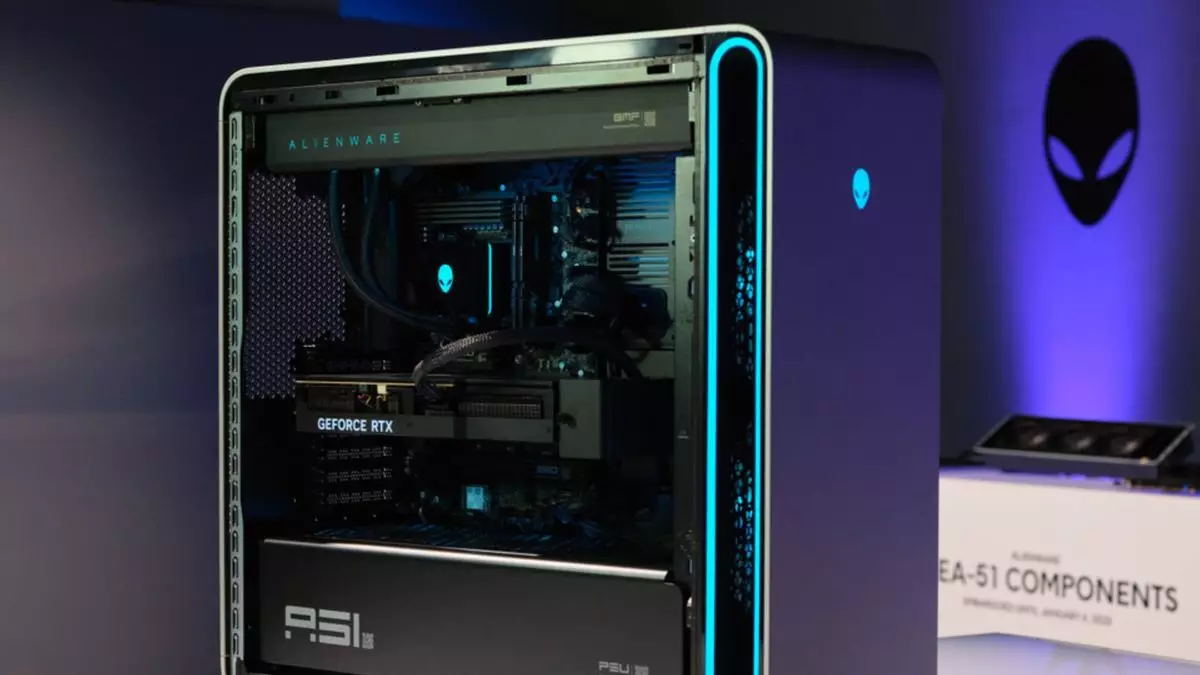Alienware has built its reputation on creating visually striking gaming rigs that deliver impressive performance. However, they often fall short in terms of upgradability, leaving users feeling locked into their initial configurations. But during this year’s CES, there was a glimmer of hope—a revelation that the new Area-51 desktop rigs might pave the way for user-friendly upgrades. Initially, it appeared that Alienware had taken a bold step towards modularity, a feature long coveted by gamers. The allure of upgrading components without feeling stifled by the original design was exciting. Yet, as the details emerged, the enthusiasm fizzled somewhat, revealing a more complicated truth.
The Asterisk in Modularity
The core disappointment for many comes from the revelation that, while the new Area-51 systems seem to offer upgradeable features, they come with hidden costs that may deter casual enthusiasts. The introduction of the AlienFX board cable conversion kit, priced at $35, is a notable example. For new owners eager to harness third-party motherboards, this additional expense feels like a caveat that taints the promise of flexibility. Essentially, unless you’re willing to fork over more cash, what might seem like a user-friendly approach is obstructed by a paywall. This frustrating twist undermines the excitement surrounding the Area-51’s potential for seamless upgrades, rendering it less accessible to budget-conscious gamers who desire high performance without breaking the bank.
Compatibility Concerns and Limitations
Diving deeper into the specifications, it becomes clear that the conversion kit’s limitations could hinder the overall experience for many users. While the list of compatible motherboards, which includes ATX12VO and mATX models, provides options, the caveat that older Area-51 rigs will not benefit from this new kit adds insult to injury for loyal users. Alienware’s rather dismissive approach towards previous models indicates a troubling trend—an intentional exclusion that could leave long-attached customers out in the cold. Furthermore, the necessity of acquiring a new power supply for non-ATX12VO motherboards adds another layer of complexity and cost that detracts from the notion of an upgradeable system.
Performance Potential: A Silver Lining
On a more positive note, the new Area-51 rigs promise significant improvements in thermal management and noise reduction. With claims of running up to 13% cooler and 45% quieter than their predecessors, the engineering behind the chassis seems robust, appealing to gamers seeking a performance boost without an audible distraction. Additionally, innovations like positive air pressure airflow may help keep the internal components cleaner and running more efficiently, which is a valuable feature for anyone concerned about the long-term integrity of their system.
The inclusion of the latest RTX 50 series cards in these systems, along with seemingly thoughtful QR codes for upgrading GPU, RAM, and SSD components, showcases Alienware’s desire to improve the user experience. Although these enhancements contribute positively to the overall performance, they do little to assuage the lingering anxiety regarding motherboard upgradeability.
Impressions and Industry Impact
What amplifies this confusion is the contradictory nature of Alienware’s approach. Here’s a company that, despite its advancements in sound and thermal engineering, still seems hesitant to fully embrace modularity. Many industry experts, as well as avid gamers, will likely see this as a disappointing half-measure—an attempt to appeal to a more fluid market without fully committing to the principles of upgradeability. This two-steps-forward, one-step-back strategy raises questions about Alienware’s direction; are they genuinely looking to modernize their systems or are they still tethered to a legacy of locking customers into specific builds?
Alienware’s latest innovation may look dazzling on the surface, but gamers are wise to scrutinize the details behind the aesthetics. The additional costs tied to upgradeability and the implied obsolescence of existing rigs complicate what should be an exciting announcement. What is meant to be a celebration of advancement feels more like a reminder of the constraints that still linger in the competitive gaming landscape. As users weigh the costs and benefits, they’ll need to ask—does the sleek design and performance boost justify the additional expenses and limitations? The answer might not be as clear-cut as Alienware hopes for.

